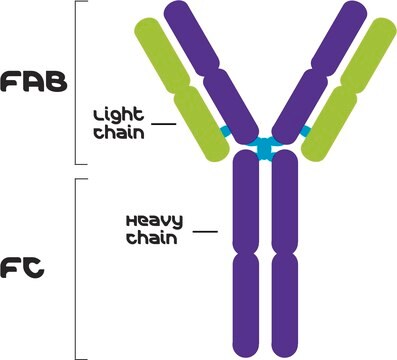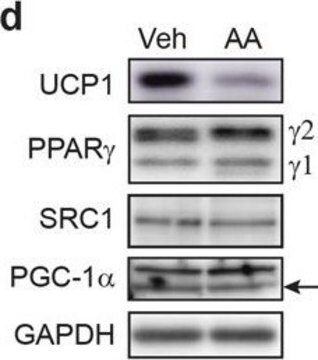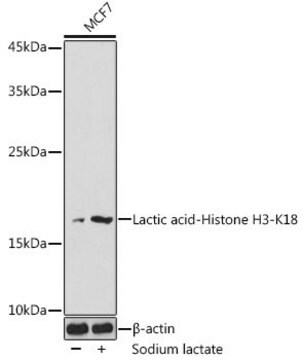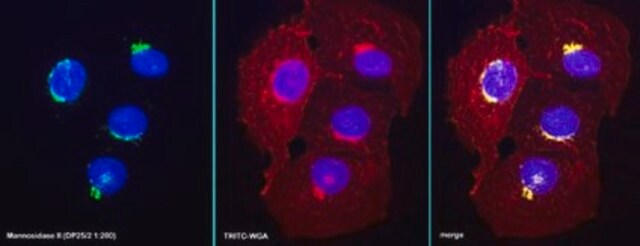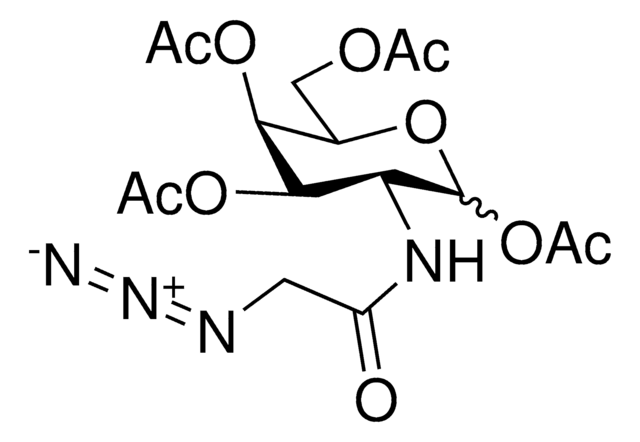G2404
Anti-Golgi FTCD antibody, clone 58k-9, Mouse monoclonal
ascites fluid
Synonyme(s) :
Anti-LCHC1
About This Item
Produits recommandés
Source biologique
mouse
Niveau de qualité
Conjugué
unconjugated
Forme d'anticorps
ascites fluid
Type de produit anticorps
primary antibodies
Poids mol.
antigen 58 kDa
Contient
15 mM sodium azide
Espèces réactives
human, bovine, mouse, pig, canine, kangaroo rat, hamster, monkey, rat
Technique(s)
electron microscopy: suitable
indirect immunofluorescence: 1:50 using cultured CHO cells
western blot: 1:5,000 using whole rat liver extract
Isotype
IgG1
Numéro d'accès UniProt
Conditions d'expédition
dry ice
Température de stockage
−20°C
Modification post-traductionnelle de la cible
unmodified
Informations sur le gène
human ... FTCD(10841)
mouse ... Ftcd(14317)
rat ... Ftcd(89833)
Description générale
Spécificité
Immunogène
Application
The antibody was used:
- for the analysis of distribution of the 58K9 protein exclusively localized in the Golgi
- as a primary antibody in the immunofluorescence analysis in studies related to functioning of nuclear envelope protein TMEM209 in lung carcinoma cells, tracking TG2 (Transglutaminase Type 2) transport in renal tubular epithelial cells, binding of TRADD (TNFR-associated death domain protein) to TNF-R1 at the plasma membrane and localization of Wilson disease protein in the Golgi apparatus
- in immunoprecipitation studies
Immunofluorescence (1 paper)
Western Blotting (1 paper)
Actions biochimiques/physiologiques
Clause de non-responsabilité
Vous ne trouvez pas le bon produit ?
Essayez notre Outil de sélection de produits.
Code de la classe de stockage
12 - Non Combustible Liquids
Classe de danger pour l'eau (WGK)
nwg
Point d'éclair (°F)
Not applicable
Point d'éclair (°C)
Not applicable
Certificats d'analyse (COA)
Recherchez un Certificats d'analyse (COA) en saisissant le numéro de lot du produit. Les numéros de lot figurent sur l'étiquette du produit après les mots "Lot" ou "Batch".
Déjà en possession de ce produit ?
Retrouvez la documentation relative aux produits que vous avez récemment achetés dans la Bibliothèque de documents.
Notre équipe de scientifiques dispose d'une expérience dans tous les secteurs de la recherche, notamment en sciences de la vie, science des matériaux, synthèse chimique, chromatographie, analyse et dans de nombreux autres domaines..
Contacter notre Service technique
